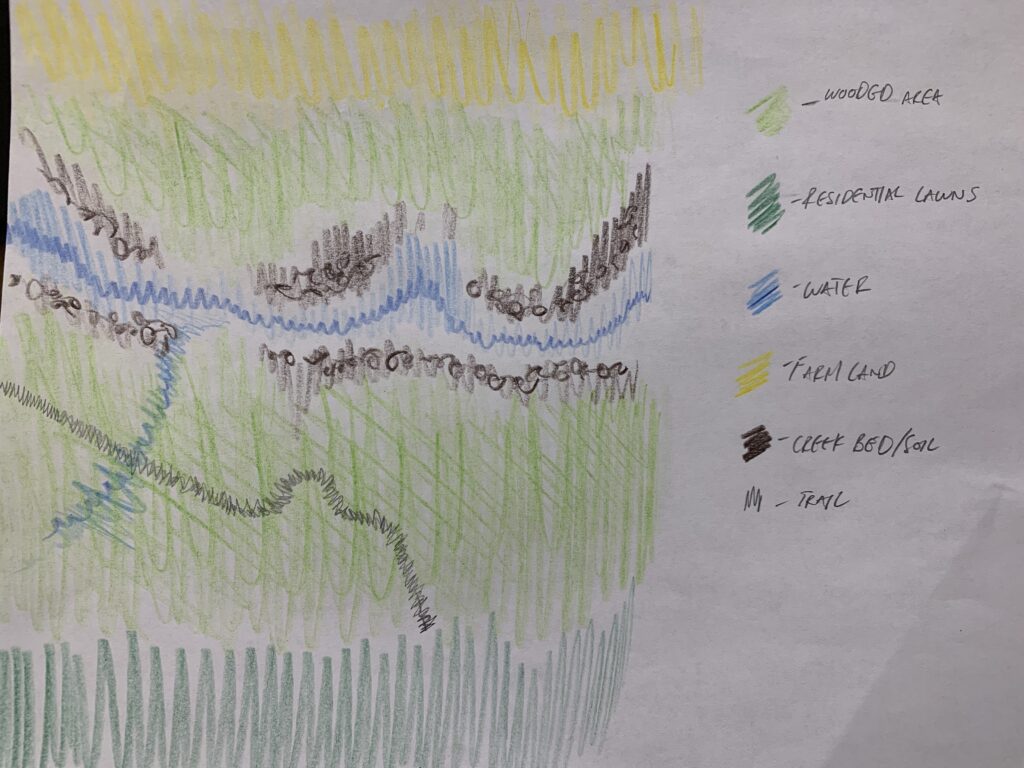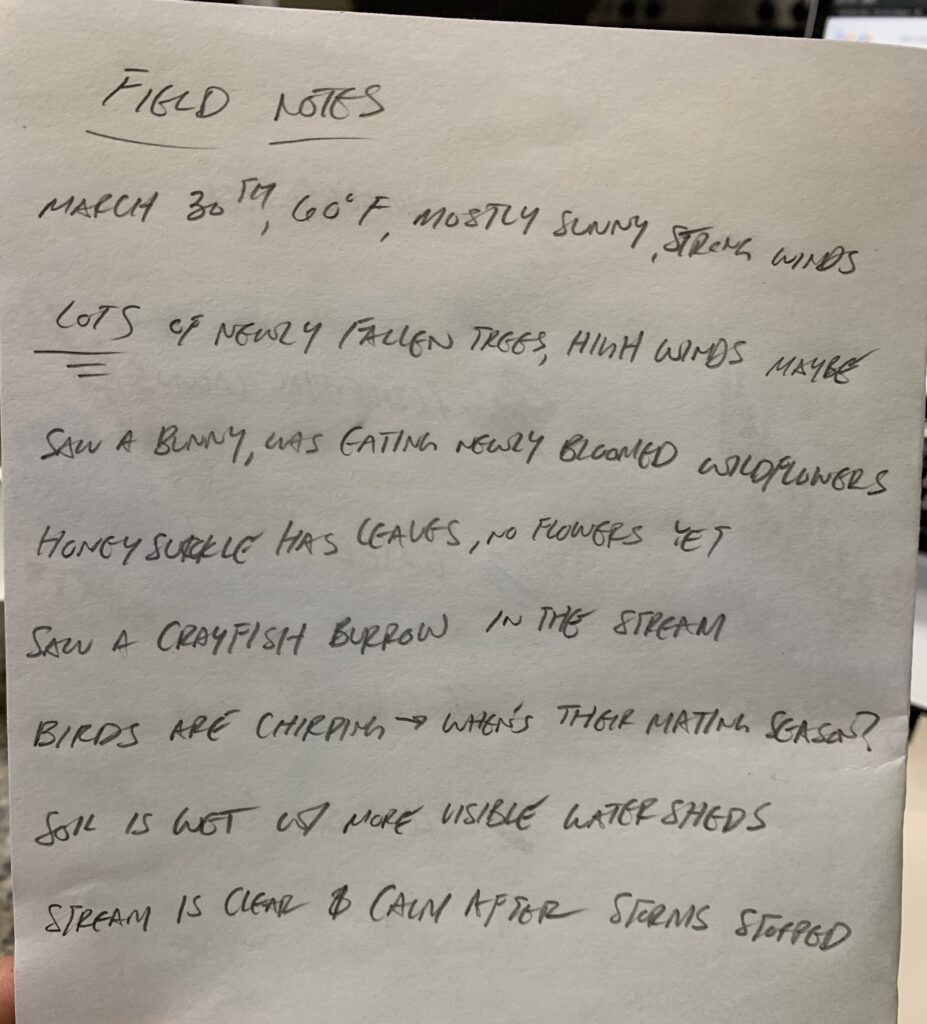Little Miami River Valley
It is with great sadness that I can no longer blog about the Trinity woods this academic year. However, looking at the bright side, I get to show all of you my backyard in Ohio during the spring. Spring is my favorite season in Ohio and love that I can experience it one more time.
In the next two entries, I hope to show you all the plant and animal life, soil/ geology and local weather in my area. To start, here is a map of my new location.

The area I live in is called the Little Miami River Valley. My house is about 6 miles west of the Little Miami River. There is a small creek that flows into the Little Miami River that provides habitat and resources for all types of plants, mammals, birds, amphibians, etc. Pictured below are some of the animals and plants I have encountered in the past two weeks.
Wildlife


Weather and Watershed
As the snow melts and the spring rains hit our backyards, runoff from neighboring farms and lawns can impact watersheds. As we learned in NR 01, pesticides, herbicides and fertilizers can impact the phosphorus and nitrogen levels in the nearby waterways. As previously mentioned, the creek behind my house is in good condition due to the wooded buffer zone that stand in between the creek and farms/ lawns. However, this is not true for all streams that flow into the Little Miami River.

Field Notes

“The older I grow the more do I love spring and spring flowers. Is it so with you?”
~Emily Dickinson
To conclude, March is a busy month for natural areas in Ohio. Most trees are blooming by the end of the month and animals are finally moving around and soaking up the sun. As hectic as our current situation is, it is comforting to know that nature still runs its cycle.
Works Cited
Fitzgerald, A. (2006). The Virtual Nature Trail at Penn State. Retrieved March 30, 2020, from https://www.psu.edu/dept/nkbiology/naturetrail/speciespages/crayfish.htm
Mill Creek Watershed Council of Communities, Citizens’ Water Quality Monitoring, & Butler County Stream Team. (2015). Stream Bank: Regional Water Quality Data Base. Retrieved March 30, 2020, from http://streambank.info/
ODNR Division of Natural Areas. (n.d.). Spring Beauty. Retrieved March 30, 2020, from http://naturepreserves.ohiodnr.gov/natural-features-of-ohio/ohio-wildflowers/species-profiles/spring-beauty
Purdey, K. (April 26, 2019). Fly Honeysuckle. photograph, Upstate New York.
Schroeder, J. (2012). Spring Beauty. photograph, Missouri.
Towne, C. (n.d.). Crayfish-in-Natural-Habitat. photograph, Apopka, Florida.
